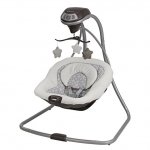Does anyone have experience with Arduino open source projects? I just spent the last few hours reading/youtubing a lot about it (first time ever for me). Here is a good introductory video by one of its inventors if you've never heard of it: https://www.youtube.com/watch?time_continue=18&v=UoBUXOOdLXY
I want to use it to put a sensor inside of a ball. I'd like to measure things like how the ball rebounds off of the rail for different tables, how the spin changes during the rail rebound, etc. I think I would need velocity right before impact (which includes direction), velocity right after impact, and rotational speed right before and after impact. I think I'd like the ball mounted on a pendulum frame, so that the bed cloth does not influence the cushion measurements. The pendulum frame would also be easy to set up repeatable strikes of the ball into the rail. Although, maybe it could be a bare ball without any frame/pendulum mounting.
I don't know anything about programming, so I'd be starting from scratch from that standpoint. From the mechanical standpoint, my background is strong, and I can build a nice pendulum frame, etc.
I think what I would need is a chip that has a 3 axis accelerometer and a 3 axis gyroscope. But I'm not certain. Mr Jewet or Mr Alciatore would this be correct?
Anyway, has anyone fooled around with it? If so, what have you made?
I want to use it to put a sensor inside of a ball. I'd like to measure things like how the ball rebounds off of the rail for different tables, how the spin changes during the rail rebound, etc. I think I would need velocity right before impact (which includes direction), velocity right after impact, and rotational speed right before and after impact. I think I'd like the ball mounted on a pendulum frame, so that the bed cloth does not influence the cushion measurements. The pendulum frame would also be easy to set up repeatable strikes of the ball into the rail. Although, maybe it could be a bare ball without any frame/pendulum mounting.
I don't know anything about programming, so I'd be starting from scratch from that standpoint. From the mechanical standpoint, my background is strong, and I can build a nice pendulum frame, etc.
I think what I would need is a chip that has a 3 axis accelerometer and a 3 axis gyroscope. But I'm not certain. Mr Jewet or Mr Alciatore would this be correct?
Anyway, has anyone fooled around with it? If so, what have you made?
